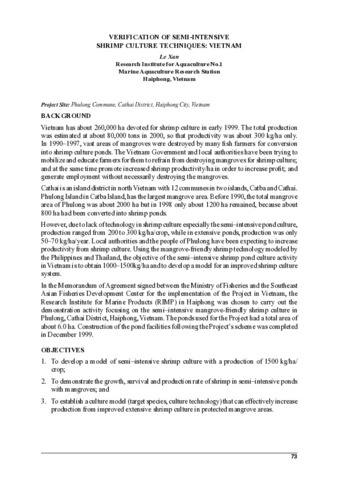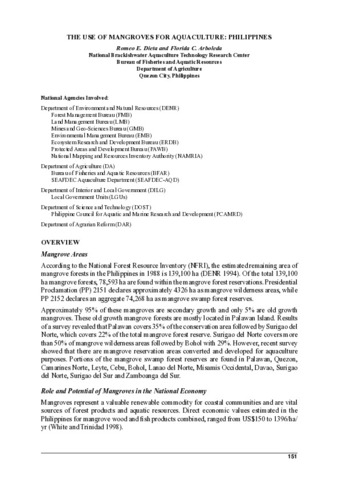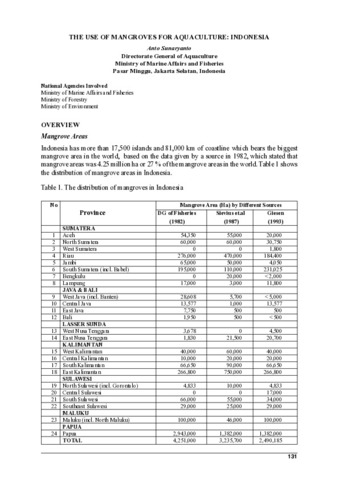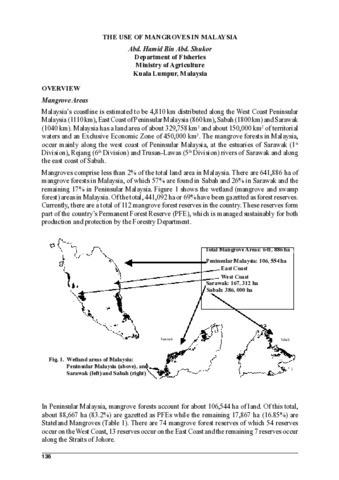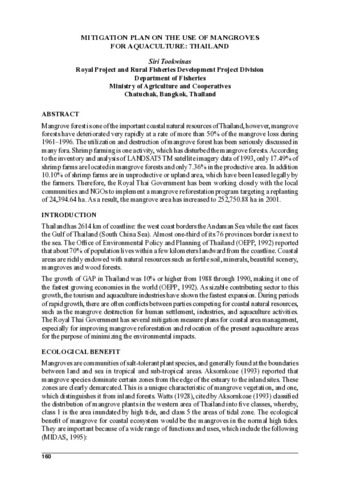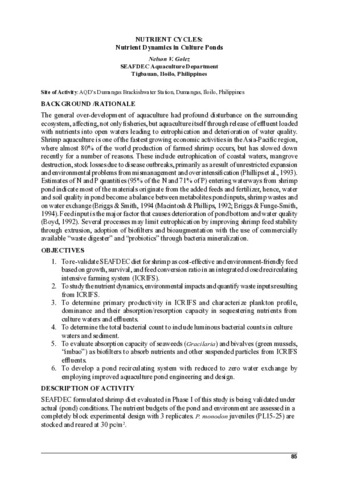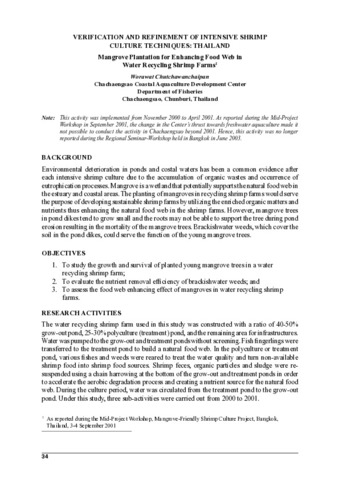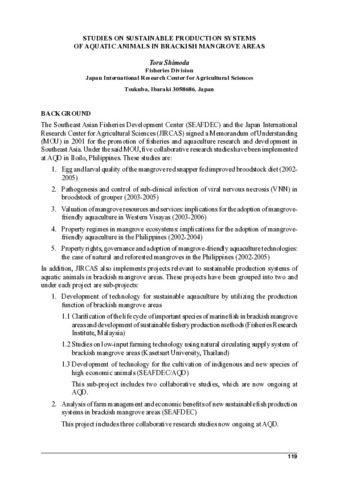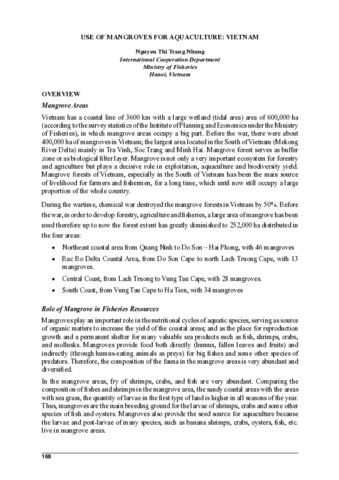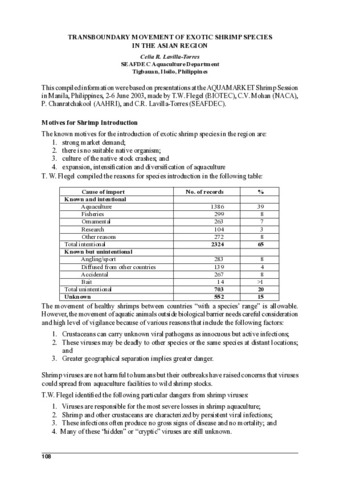Search
Now showing items 1-10 of 22
Verification of semi-intensive shrimp culture techniques: Vietnam.
(Aquaculture Department, Southeast Asian Fisheries Development Center, 2004)
Vietnam has about 260,000 ha devoted for shrimp culture in early 1999. The total production was estimated at about 80,000 tons in 2000, so that productivity was about 300 kg/ha only. In 1990–1997, vast areas of mangroves ...
The use of mangroves for aquaculture: Philippines
(Aquaculture Department, Southeast Asian Fisheries Development Center, 2004)
According to the National Forest Resource Inventory (NFRI), the estimated remaining area of mangrove forests in the Philippines in 1988 is 139,100 ha (DENR 1994). Of the total 139,100 ha mangrove forests, 78,593 ha are ...
The use of mangroves for aquaculture: Indonesia.
(Aquaculture Department, Southeast Asian Fisheries Development Center, 2004)
Indonesia has more than 17,500 islands and 81,000 km of coastline which bears the biggest mangrove area in the world, based on the data given by a source in 1982, which stated that mangrove areas was 4.25 million ha or 27 ...
The use of mangroves in Malaysia
(Aquaculture Department, Southeast Asian Fisheries Development Center, 2004)
Mitigation plan on the use of mangroves for aquaculture: Thailand.
(Aquaculture Department, Southeast Asian Fisheries Development Center, 2004)
Mangrove forest is one of the important coastal natural resources of Thailand, however, mangrove forests have deteriorated very rapidly at a rate of more than 50% of the mangrove loss during 1961–1996. The utilization and ...
Nutrient cycles: Nutrient dynamics in culture ponds.
(Aquaculture Department, Southeast Asian Fisheries Development Center, 2004)
The general over-development of aquaculture had profound disturbance on the surrounding ecosystem, affecting, not only fisheries, but aquaculture itself through release of effluent loaded with nutrients into open waters ...
Mangrove plantation for enhancing food web in water recycling shrimp farms.
(Aquaculture Department, Southeast Asian Fisheries Development Center, 2004)
Environmental deterioration in ponds and costal waters has been a common evidence after each intensive shrimp culture due to the accumulation of organic wastes and occurrence of eutrophication processes. Mangrove is a ...
Studies on sustainable production systems of aquatic animals in brackish mangrove areas.
(Aquaculture Department, Southeast Asian Fisheries Development Center, 2004)
The Southeast Asian Fisheries Development Center (SEAFDEC) and the Japan International Research Center for Agricultural Sciences (JIRCAS) signed a Memorandum of Understanding (MOU) in 2001 for the promotion of fisheries ...
Use of mangroves for aquaculture: Vietnam.
(Aquaculture Department, Southeast Asian Fisheries Development Center, 2004)
Vietnam has a coastal line of 3600 km with a large wetland (tidal area) area of 600,000 ha (according to the survey statistics of the Institute of Planning and Economics under the Ministry of Fisheries), in which mangrove ...
Transboundary movement of exotic shrimp species in the Asian region.
(Aquaculture Department, Southeast Asian Fisheries Development Center, 2004)
This compiled information were based on presentations at the AQUAMARKET Shrimp Session in Manila, Philippines, 2-6 June 2003, made by T.W. Flegel (BIOTEC), C.V. Mohan (NACA), P. Chanratchakool (AAHRI), and C.R. Lavilla-Torres ...

